Flee (2022)
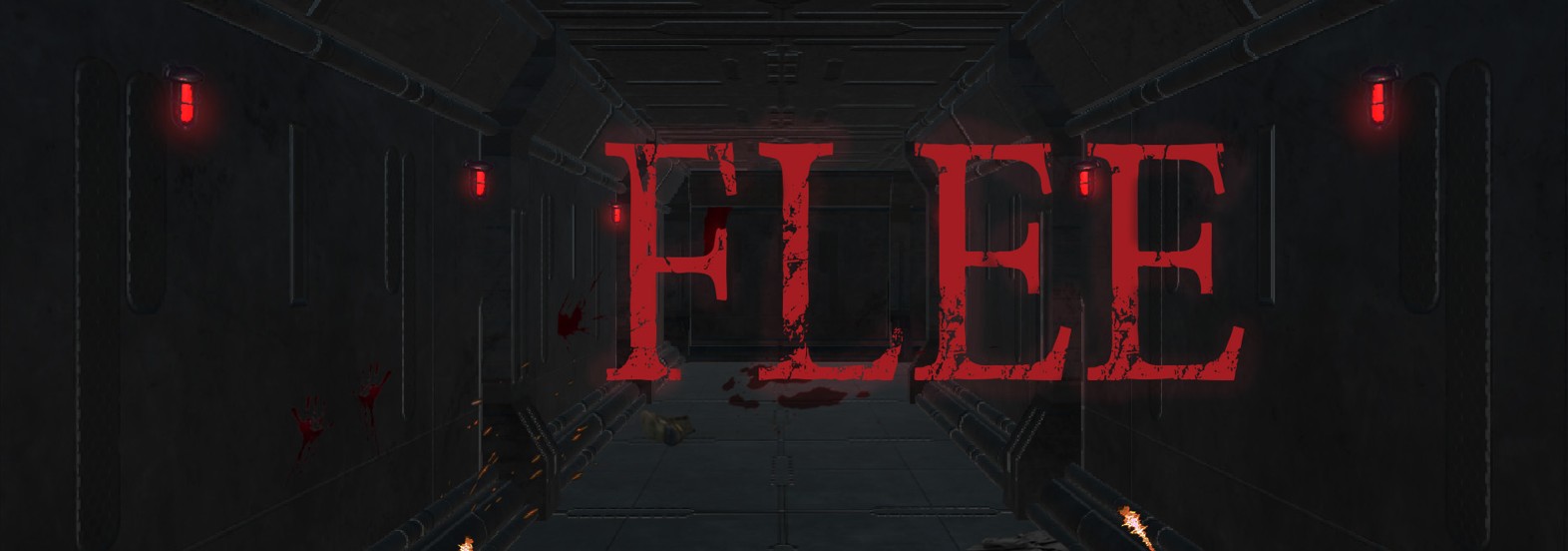
About
Flee was created for a senior-level narrative design course with my team creating a narrative type-esque visual novel inspired by "choose your own adventure games". This narrative-driven game with multiple endings allows players to have different experiences through multiple playthroughs.
Synopsis
Flee is a thriller sci-fi "choose your own path" visual novel, where the player will have to make decisions throughout the game that may change the narrative. The story revolves around a passenger trapped on a spaceship by himself and determined to flee the ship. Throughout his journey, he uncovers the reason behind what has happened on the ship. Complete with four different endings and a variety of choices, the player will immerse themselves in the narrative while incorporating their personality through the decisions they make.
Summary of Contributions
Narrative Design
During the brainstorming phase, we went through many iterations of the plot. Originally we had the setting underwater in a submarine, however the "space" theme brings a more eerie mood with the uknown and uncertainty in the void of space and time. This also helped us take advantage of the unknown and uncertainty in space, and how we can lay a sense of paranoia that comes with it.

Main Programming
The game was programmed with the help of Ren'Py Visual Novel Engine, an open source game engine catering to storytelling in interactive kinetic and visual novels. This allowed us to quickly be able to code the game in an IDE with ease as a lot of the heavy lifting python work are already finished. This was our first time using Ren'Py, hence there was a lot of trial and error when compiling. A major learning experience from this was time management and version control as we create, compile, and rewrote scripts (player interactions, screen dynamics, & GUI) to fit our storytelling needs in a short amount of time.
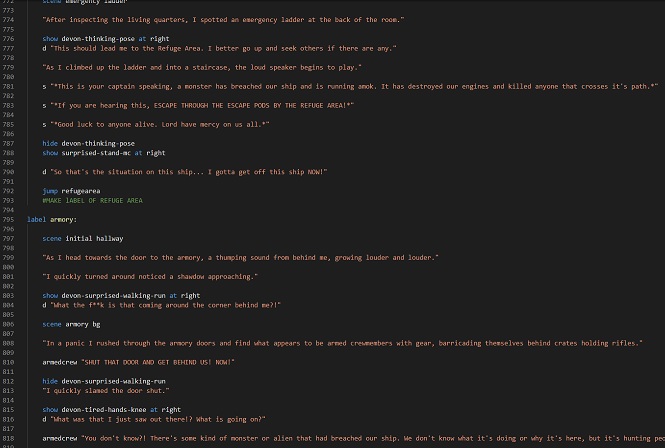
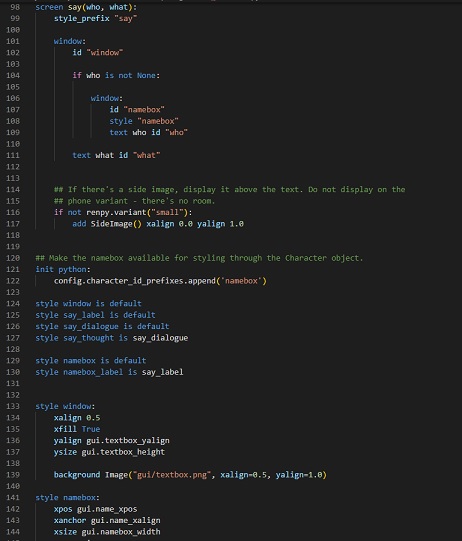
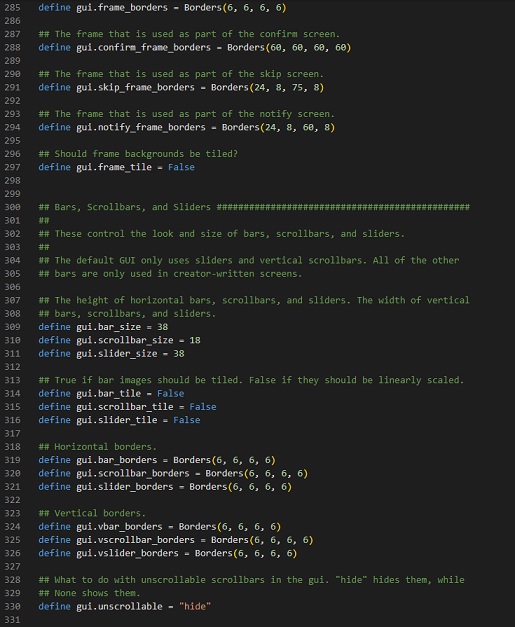
Script Writing
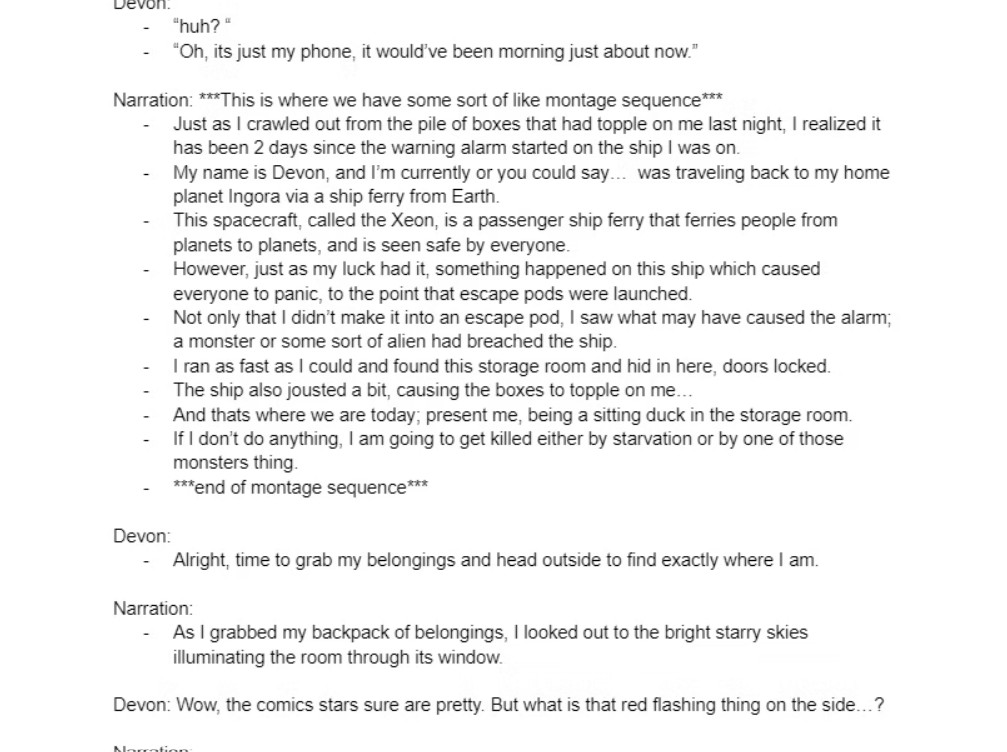 Flee's script is about 10 pages long with all the path dialouge written out by us through our creative brainstorm of what
we thought and expect from sci-fi horror based from past works. Each player's interactions with items are also scripted with its own dialogue ensuring
seemless player interactions.
When writing our script, we had to also consider how effective and compelling the storytelling to the audience to minimize cliche
and plot holes.
Flee's script is about 10 pages long with all the path dialouge written out by us through our creative brainstorm of what
we thought and expect from sci-fi horror based from past works. Each player's interactions with items are also scripted with its own dialogue ensuring
seemless player interactions.
When writing our script, we had to also consider how effective and compelling the storytelling to the audience to minimize cliche
and plot holes.
Character & Environment Model
Each and every background was created through the mix of Unity Game Engine assets/materials. The process was to generate the setting/background of each room in Unity, position the camera, and take a screen capture of the room. Then fix the lighting and add all the details in Photoshop to complete the background.
To represent our main character, Devon, we used a 3D character creation software called VRoid Studio. With it's help of templates and models, we were able to pose characters easily with the use of movable joints overtop a green screen. From there we were able to edit with photoshop, creating a 2D image for use in our game. Having a character model in the game visually assist players who our main character is while emperhsizes his movement in the game as they makes choices to progress.
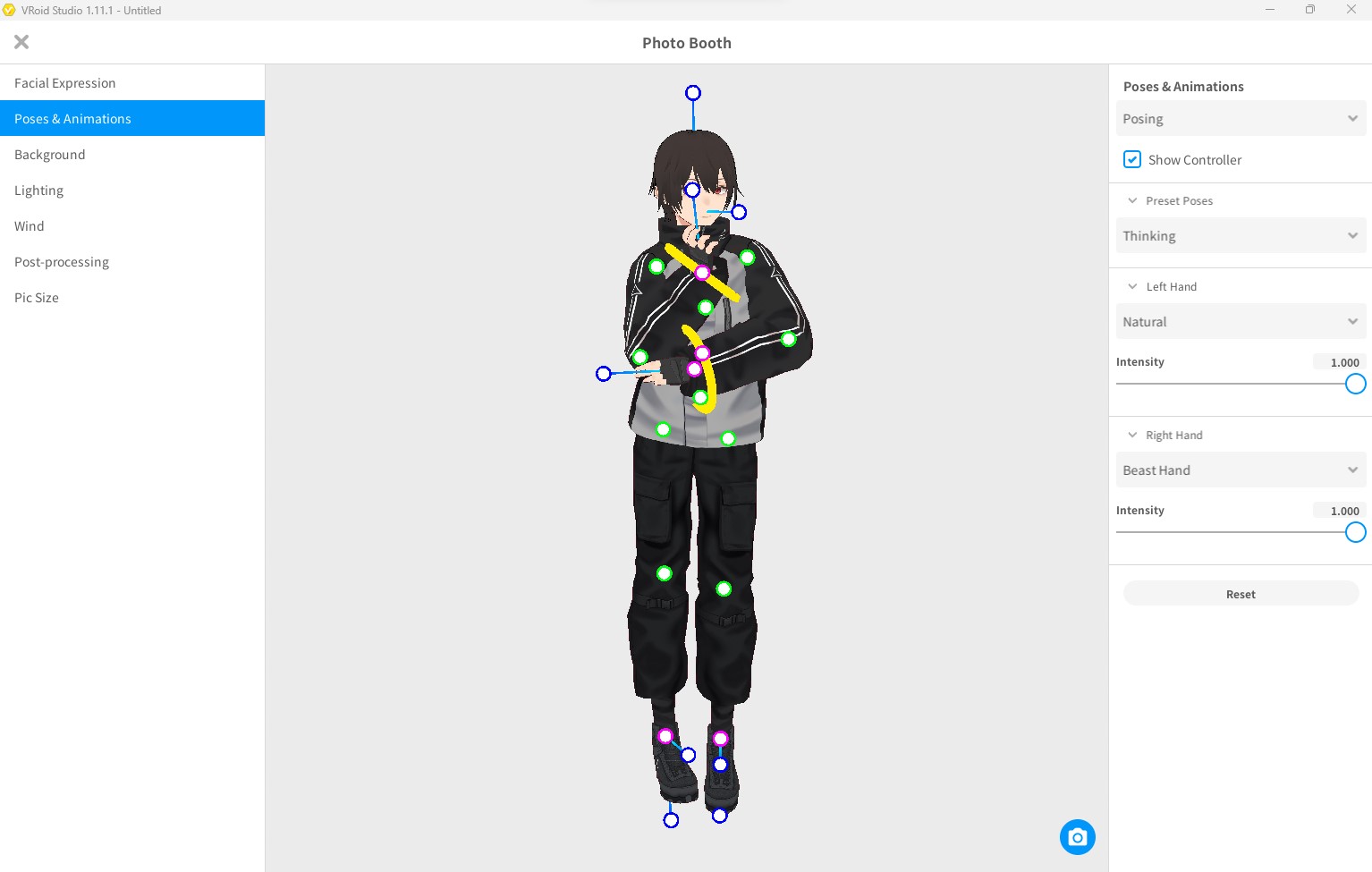
Reflection
The journey in the creation of this project was both challenging and rewarding as it was something that I've never created before nor have experienced in simple game development. Throughout this experience, we've learned clear and articulate narrative was the most time consuming as you want your story to be the main driver of the game to have better player's experience. Coding and script editing though became our second challenge, quickly able to overcome it in the short three weeks we had in learning Ren'Py and version control. And lastly, character rigging and modeling was the less challenging due to having experience in 3D character modeling and rigging in the past through personal media content creation. At the end of the day, we're proud of what we've produced in a short amount of time and learned a lot through the process along the way.